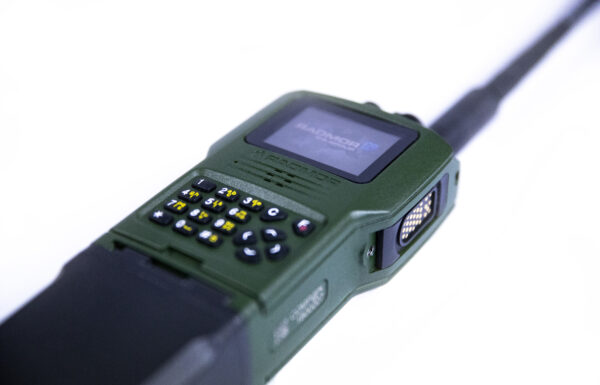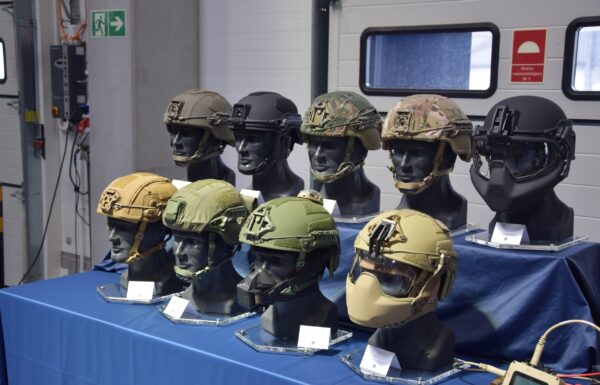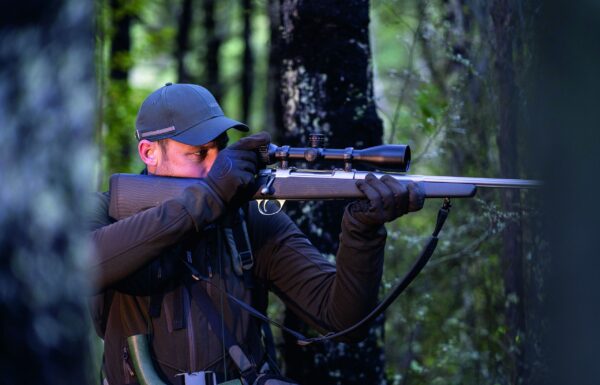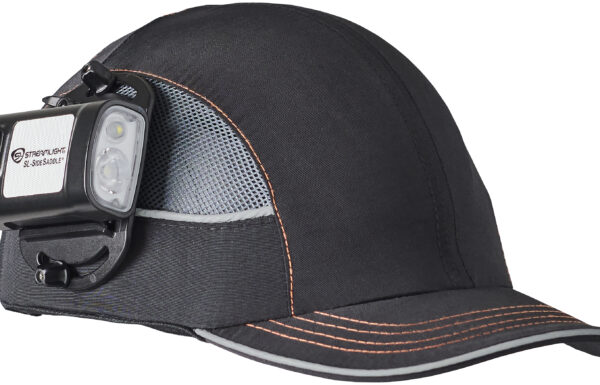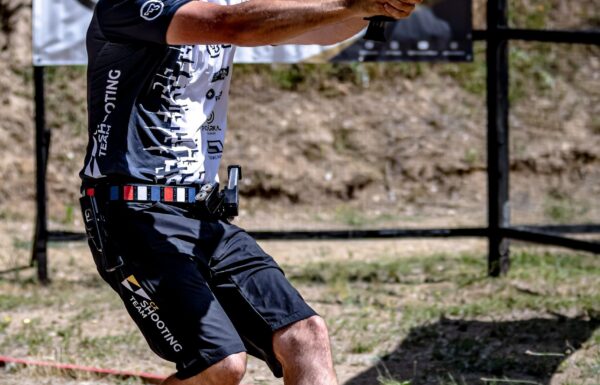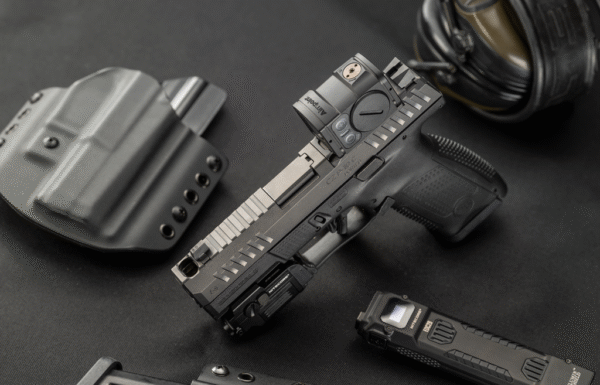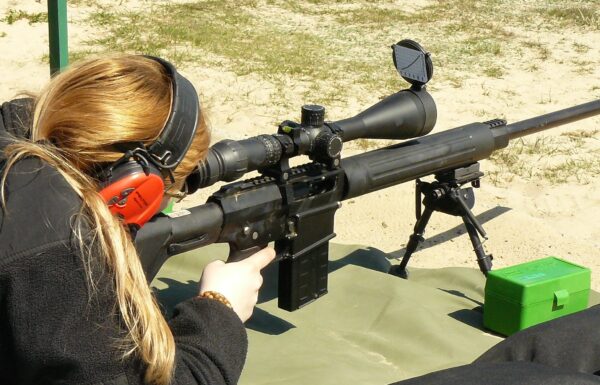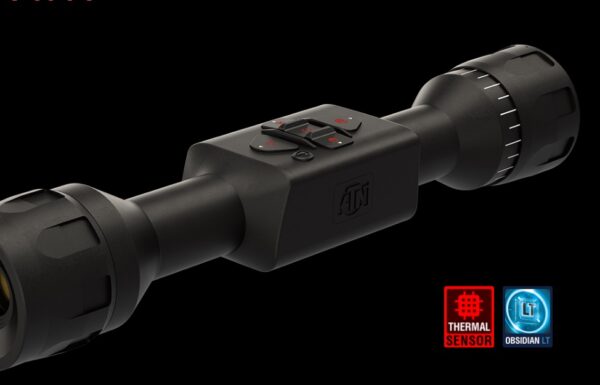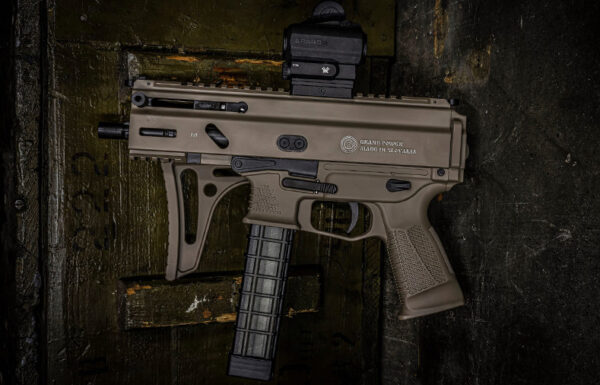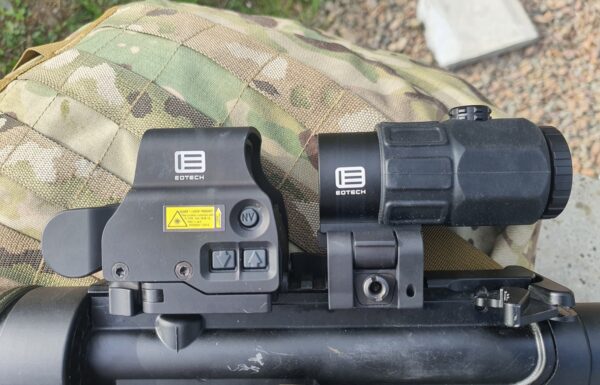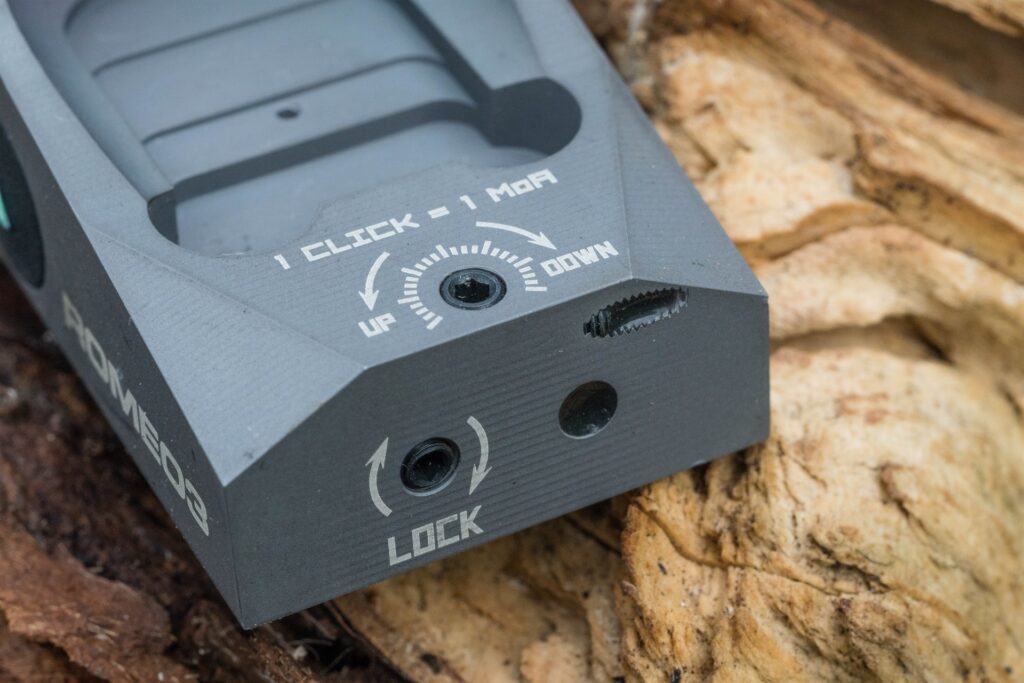Article previously published on MILMAG 01/2019
My first association with SIG Sauer brand is the legendary 9-mm semi- -automatic P226 pistol, a weapon of high quality, durability, and precision, chosen (among others) by the United States Navy SEALs. The second thing that comes to mind when thinking about the Swiss-German company is that such quality tends to be very expensive. SIG Sauer’s products are definitely not the cheapest ones on the market. Because of this, I was even more amazed when the company launched a series of affordable red dot sights. Two of these sights – ROMEO3 and ROMEO5 – were tested by our staff.
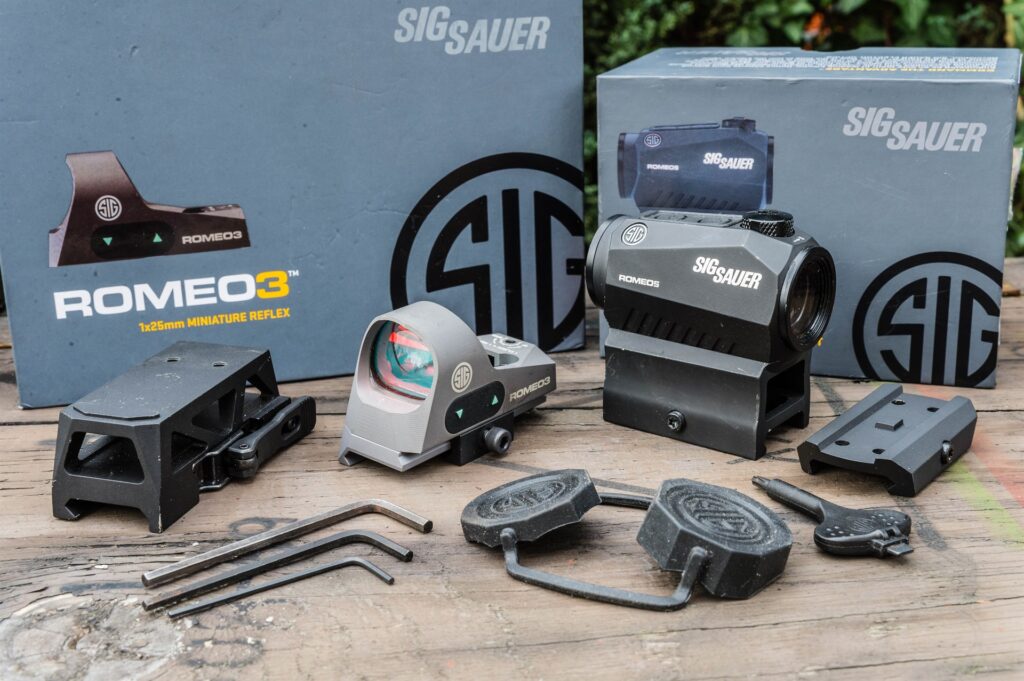
SIG Sauer Electro-Optics sights with two mounts (high and low) come in boxes made of hard cardboard filled with fitting foam molds protecting the contents
SIG Sauer Electro-Optics is one of the brands belonging to SIG Sauer company, a prominent firearms manufacturer. The company was established in 1976 as a partnership between Swiss SIG (Schweizerische Industrie-Gesellschaft) and J.P. Sauer & Sohn from Germany. The partnership was supposed to help the Swiss to bypass the limits on the exportation of the firearms imposed by the legislation of the neutral country and to sell their weapons on the global market as a German business. The Swiss company manufacturing A good way of zeroing an optical sight is to align the aiming point with previously adjusted iron sights. Afterward, one needs to finely adjust the point itself. This technique is much faster, but works only in case of mounts that align the center of the lens with iron sights. firearms was at first, in the 1990s, detached from SIG consortium (specialized in the production of plastic packaging) as SIG Arms, then it was sold to the German investors and named Swiss Arms. As of now, the German business L&O Holding (Lüke & Ortmeier Gruppe) manages three companies: SIG Sauer GmbH in Germany, Swiss Arms AG in Switzerland and SIG Sauer Inc. in the United States. The majority of production takes place in America (only a few types of handguns are made in Europe; this can possibly change as a result of signing a contract with one of the European armies) and the company participates in global tenders as an American one. In January 2015 an announcement was made that a new division of the American branch, named SIG Sauer Electro-Optics, had been established. The division specializes in developing and manufacturing of optical, red dot and thermal sights, rangefinders, and laser pointers, tactical lights, binoculars and observation scopes, magnifiers and other accessories.
FIRST IMPRESSION
ROMEO3 and ROMEO5 red dot sights come in solid and aesthetically pleasing boxes imprinted with the manufacturer’s logo. It should also be noted that the packaging is sealed with holographic stickers. The sights were carefully put in fitting foam molds. The kit includes almost everything a shooter needs: the sight itself, two mounts of different height, a torx or Allen key used to fix the sight to the mount and the mount to a universal rail, a rubber guard for the lens (or, in case of ROMEO3, for the whole sight), a glass polishing cloth and a battery. One should definitely note that every set includes two mounts; it is a great advantage of the ROMEO series. Without any additional – and probably considerable! – expenses, we can fix the sight on the high mount, as it is required in case of AR-15 rifle and similar weapons with linear design (i. e., when the buttstock is in line with the barrel, so basically in every modern weapon with militar y origins), or on the low one, fitting other models, primarily AK.
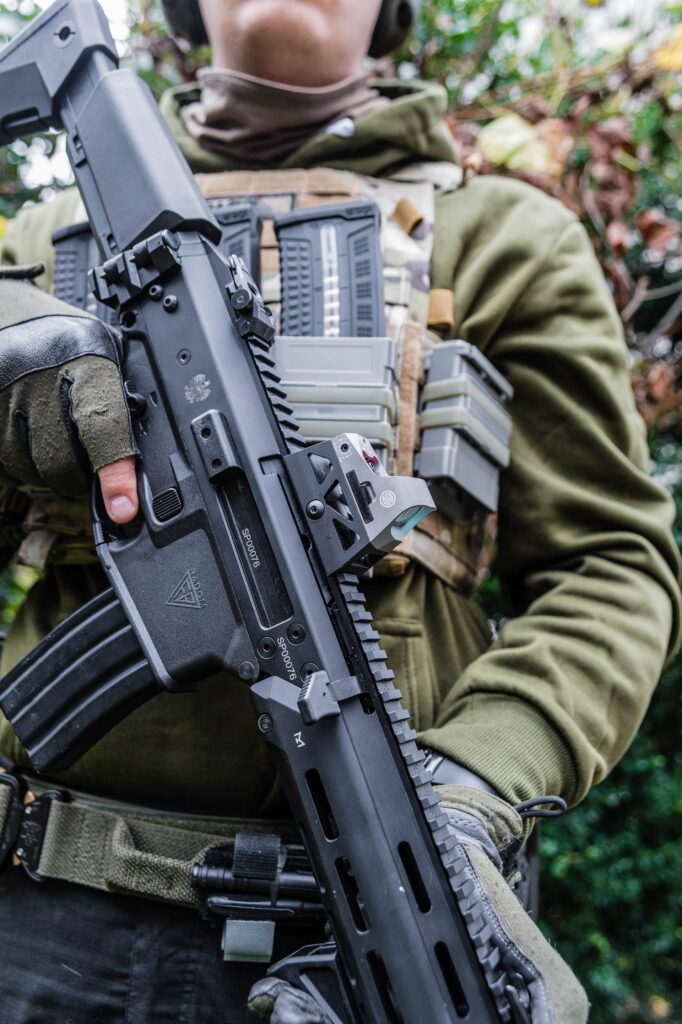
ROMEO3 red dot sight on a high mount with an eccentric lever on a Grot S semi-auto rifle. Such base is designed for weapons with linear design and it will fit many AR-15 clones
A red dot sight is a type of optical sight equipped with a built-in source of light and an optical system that is responsible for collimation (alignment of divergent beams so that they become parallel). The light does not enter the shooter’s eye directly but through a filter or a mirror which directs the beam into the eye. Due to the emitter being installed below the aiming line, the shooter sees through the sight an image with a point or a grid. The Electronic, developed by a Swedish company Aimpoint, is thought to be the first of such devices designed for firearms.
MOUNTING
The manufacturer designed the mounts to work with one of the most popular accessory rails, MIL-STD-M1913 (Picatinny) and its slightly modified variation NATO Accessory Rail (NAR). Mounting the sights onto the bases and then onto weapons is very simple, and SIG Sauer Electro-Optics provides their customers with all the necessary tools. However, it is important to de-grease the screws and to use LocTite in order to avoid any unpleasant surprises. All things considered, glue is the only optional component that the whole kit lacks. In the case of ROMEO3, the low mount needs to be tightened with the Allen key, and the high one is equipped with a QR (Quick Release) mechanism. It consists of a lever with an additional safety lock. In order to dismount ROMEO3 from the rail, one needs to press the button on the back side of the device and pull the lever up. Both ROMEO5 mounts can be attached to the rail with a torx key.
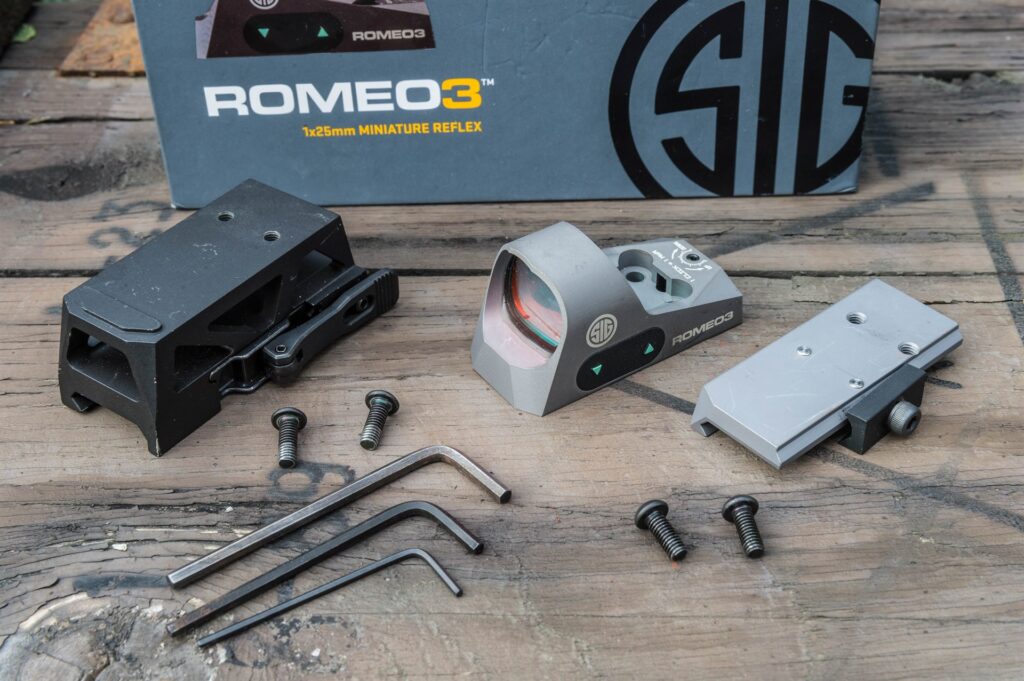
ROMEO3 kit includes wrenches and two sets of two screws of different length for high and low mounting. The sight is additionally stabilized by two pins
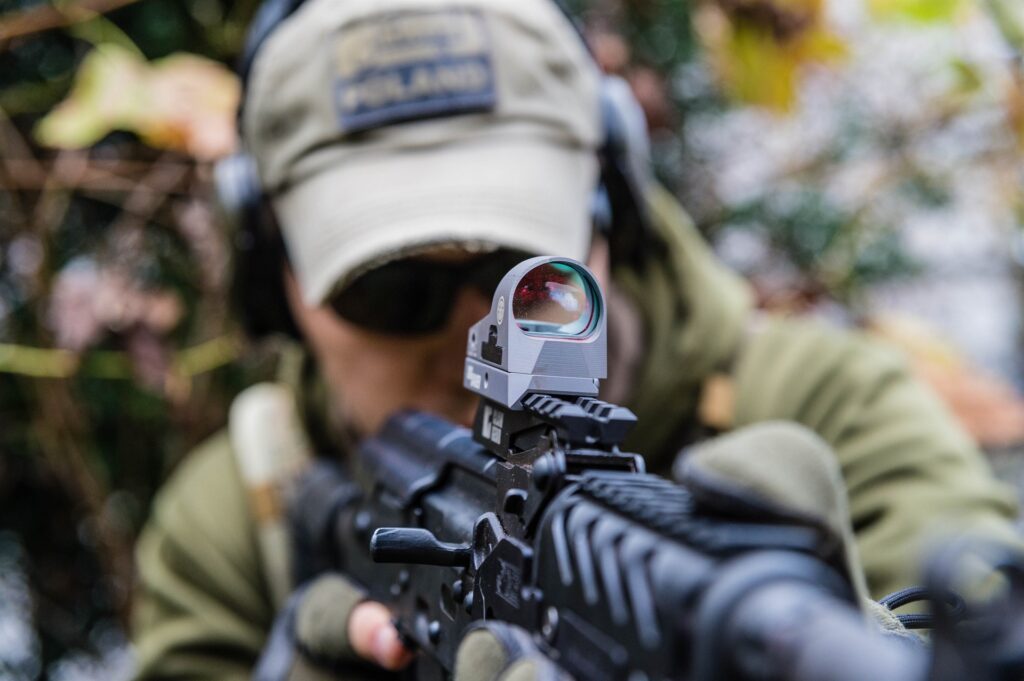
ROMEO3’s low mount allows to attach it to SMGs and AK rifles, which have iron sights placed close to the barrel’s axis
MOTAC SYSTEM
ROMEO3 and ROMEO5 red dot sights are equipped with a standby system named MOTAC (Motion Activated Illumination). The system turns off the light-emitting diode when the device does not detect any motion. In case of ROMEO5, it is activated after about 120 seconds of idleness, whereas ROMEO3 shuts down after 90 seconds. Even the slightest movement of the weapon equipped with either of the sights causes an immediate activation of the device. The aiming point is projected onto the lens with a previously set brightness level. The system works great and it has not failed even once during the tests.
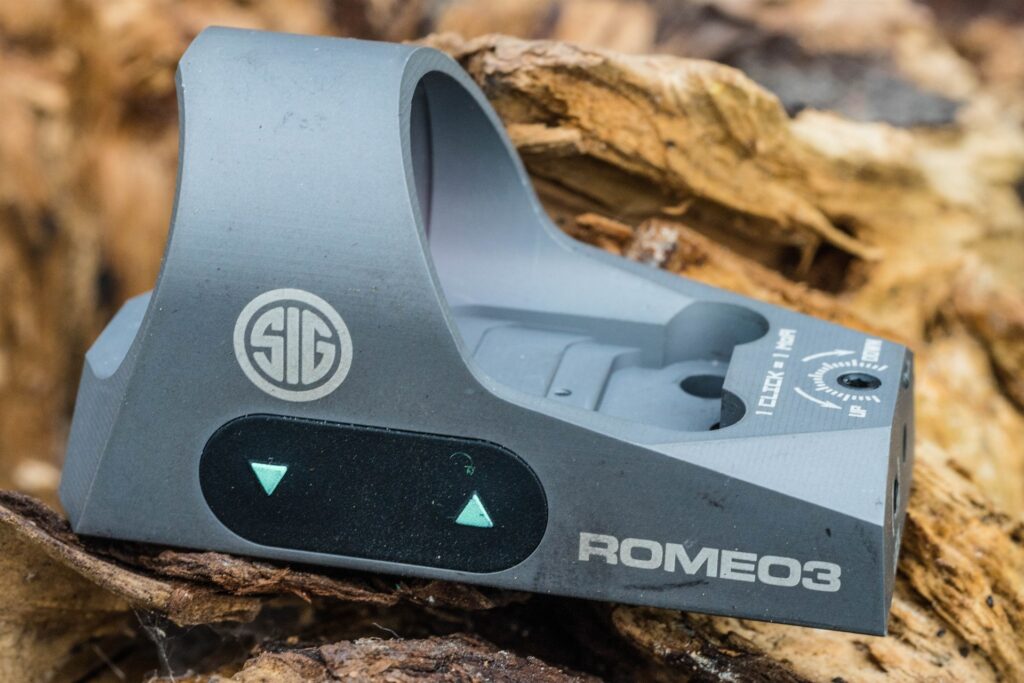
You can turn ROMEO3 on and adjust its brightness with two buttons located on the left side of the device
ROMEO3
ROMEO3 has a particularly interesting visual design that can be characterized as dynamic and aggressive – just like a Formula One car or a supersonic jet fighter. This impression is strengthened by the laser-imprinted marks and the device’s color. In contrary to most red dot sights, it is not anodized black, but it was painted grey. Because of this, the device sticks out on the weapon. The front part of ROMEO3 matches both types of mounts perfectly. Generally speaking, it looks nice and is aesthetically pleasing. You could even call it a piece of functional art from the second decade of the 21st century.
ROMEO3 is 42 millimeters high, 58 millimeters long, 30 millimeters wide and it weighs only 40 grams. ROMEO3 is an open-type red dot sight – it means that the emitter of the aiming point is not covered and it casts light on a single lens in the frontal part of the device. Theoretically, the weakest point of such design is that the LED might get dirty and that the dirt will block the beam which is supposed to be visible on the frontal glass. And although it is hard to imagine such situation on a shooting range – if you suddenly get an irresistible desire to douse your weapon in particularly thick mud – consider yourself warned.
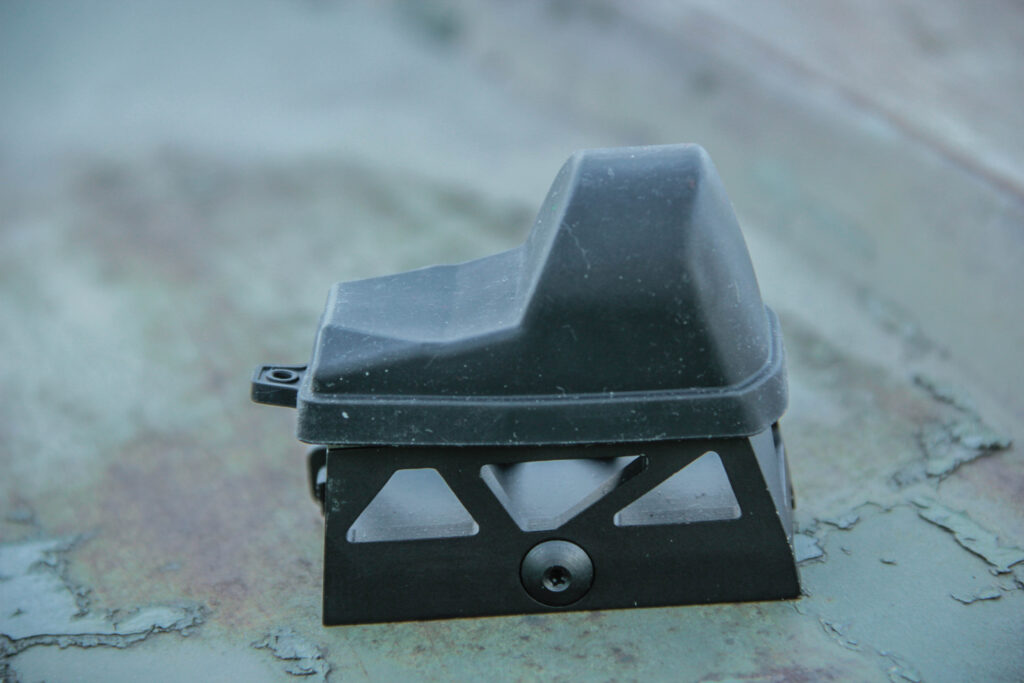
ROMEO3 comes with a rubber guard securing the sight during transport
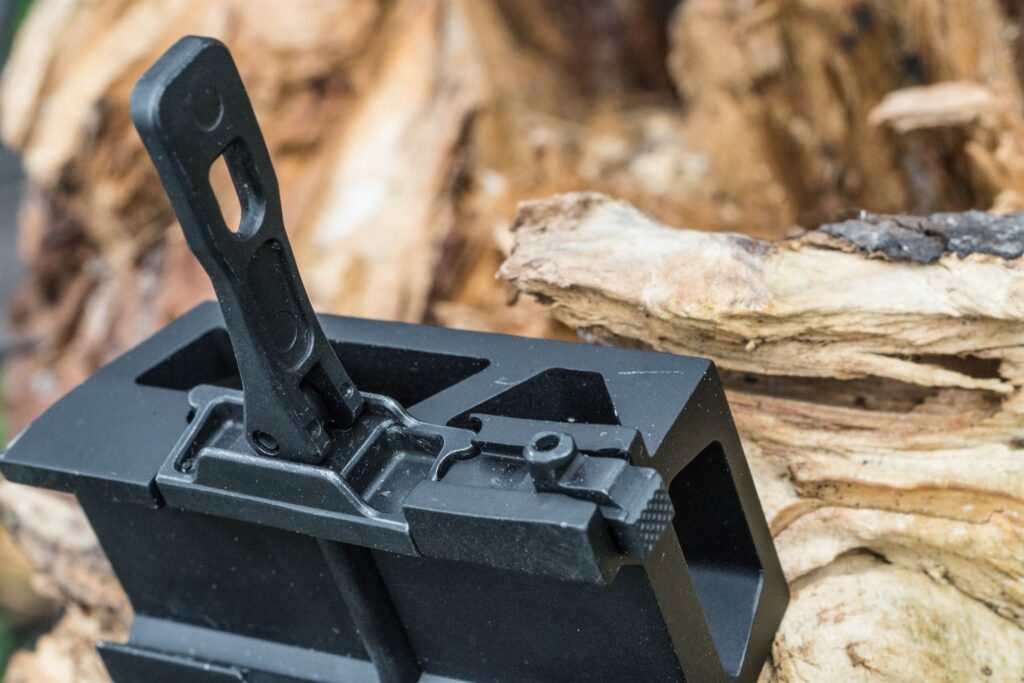
A high mount with an eccentric lever and its lock on the back side of the device
RETICLE
ROMEO3 red dot sight has a reticle in form of an illuminated dot with a size of 3 MOA (90 millimeters on a 100 meters distance). This suggests that the sight was designed for slightly shorter shooting distance than ROMEO5. The lens’s dimensions are 21×25 millimeters, and its bluish hue can at first seem slightly irritating. After some time, however, the shooter gets accustomed and stops noticing it. Brightness regulators of the reticle were located on the left side of the sight; they move with audible clicks, but in my opinion, they do it a bit worse than the ones in ROMEO5. The sight has eleven levels of brightness, two of which enable simultaneous use of night vision devices due to their low intensity.
Zeroing ROMEO3 requires loosening the screw on the back of the sight that locks the adjustment screws (labeled “LOCK”). Otherwise, the device may get damaged. The reticle can be regulated on a scale of up to 40 MOA on each directon (1 click equals 1 MOA). You can adjust the reticle by using the Allen key on a proper socket: vertically – the one on top, above the emitter, horizontally – the one on the right.
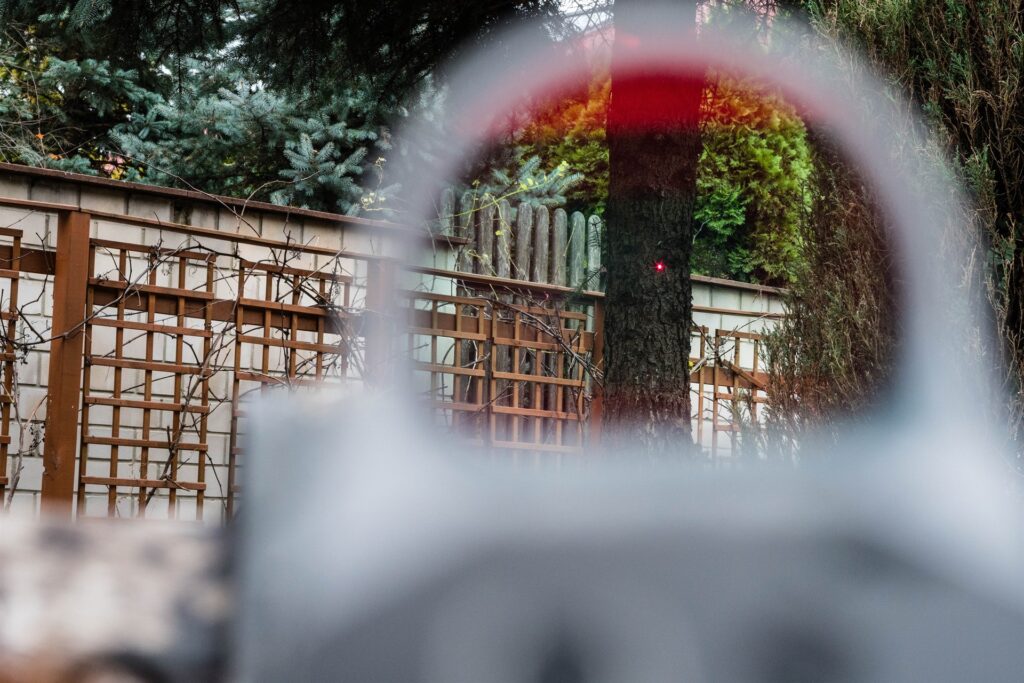
ROMEO3’s reticle is an illuminated dot with a size of 3 MOA (90 millimeters on a distance of 100 meters), which means that it was designed for shorter distances.
POWER SUPPLY
ROMEO3 sight is powered with a CR2032 battery. Its installation is very simple as it comes down to putting it (positive side up) into a sliding tray on the side of the device. Despite ROMEO3 being an open-type red dot sight, it has the same level of water resistance (IPX-7) as ROMEO5. There is, however, another question of whether droplets of water will really have no negative impact on the beam sent from an uncovered emitter. Interestingly, the manufacturer does not give any information on the battery’s lifespan.
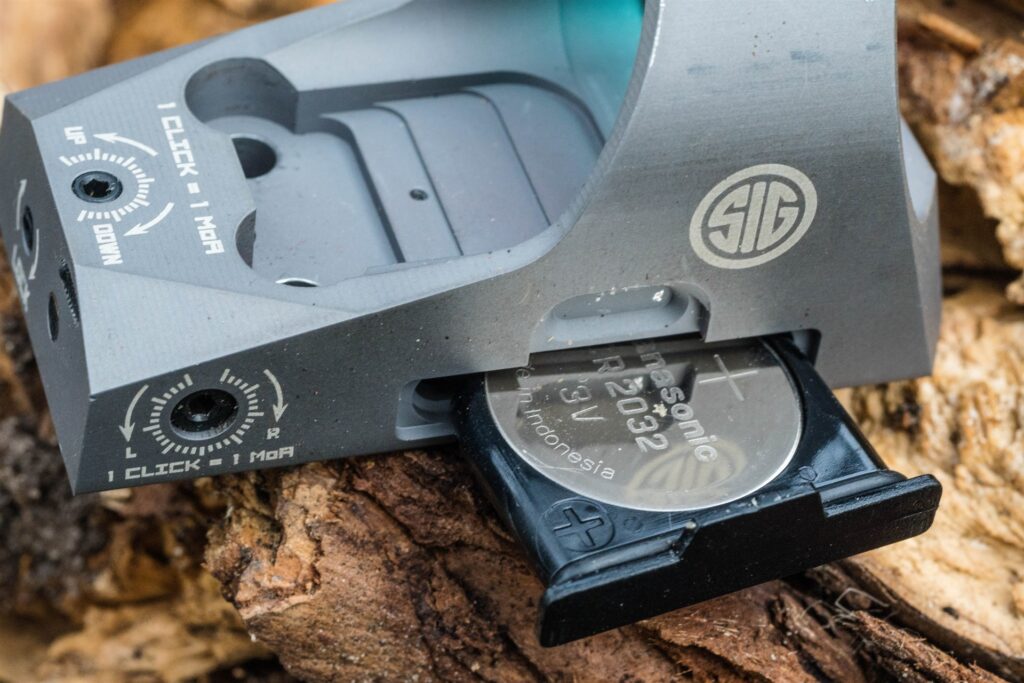
CR2032 battery powering the sight fits into a small tray located on the left side of the device. It can be opened with a small-caliber round, a screwdriver or a coin
ROMEO series consists of 10 models of red dot sights, two of which are open-type. The other ones are closedtype devices, differing in price, size, reticle type and equipped with different features, such as additional photovoltaic panels or other accessories. JULIET4 and 6 magnifiers complement the series. ROMEO1 earned the „Optics of the Year” award from Guns & Ammo Magazine in 2016. In the same year, ROMEO4M was chosen by the FBI as a sight for their patrol rifles.
ROMEO5
ROMEO5 is a closed-type red dot sight with a more typical design. The sight’s lenses are clear and transparent.
ROMEO5 is water-resistant up to one meter and hence rated IPX-7. It is filled with neutral gas which prevents the glass from fogging. The weight of the device is 145 grams, its length is 63 millimeters while both width and height equals 38 millimeters. The lens’s diameter is 20 millimeters, just as in other such devices. While describing the sight, I could not resist the impression that I have seen it before. It seems that nothing new can be invented here, although SIG Sauer Electro-Optics tried to avoid replicating the iconic shape of Aimpoint Micro T-1. The Swedish design became a model for the majority of similar sights. ROMEO5 has a different geometry of both sides of the main body, highlighted by oblique incisions. Visually sharp edges of the device are rounded enough not to cut anyone who handles them.
Similarities of ROMEO5 to the Swedish device are obvious, but, as the design has to give way to functionality, nothing else could be done. On the other hand, the fact that the shape and weight, the way of inserting the battery, the base, the dot-positioning turrets, and even the rubber guards are generally the same in these two models means that one can easily get used to ROMEO5. When compared to the Micro T-1, SIG Sauer Electro-Optics sight’s reticle is adjusted in a different way – with rubber buttons located on top of the device.

ROMEO5 on a high mount on a Grot S rifle. It was positioned in a way that the weapon’s iron sights are aligned with the red dot sight’s reticle
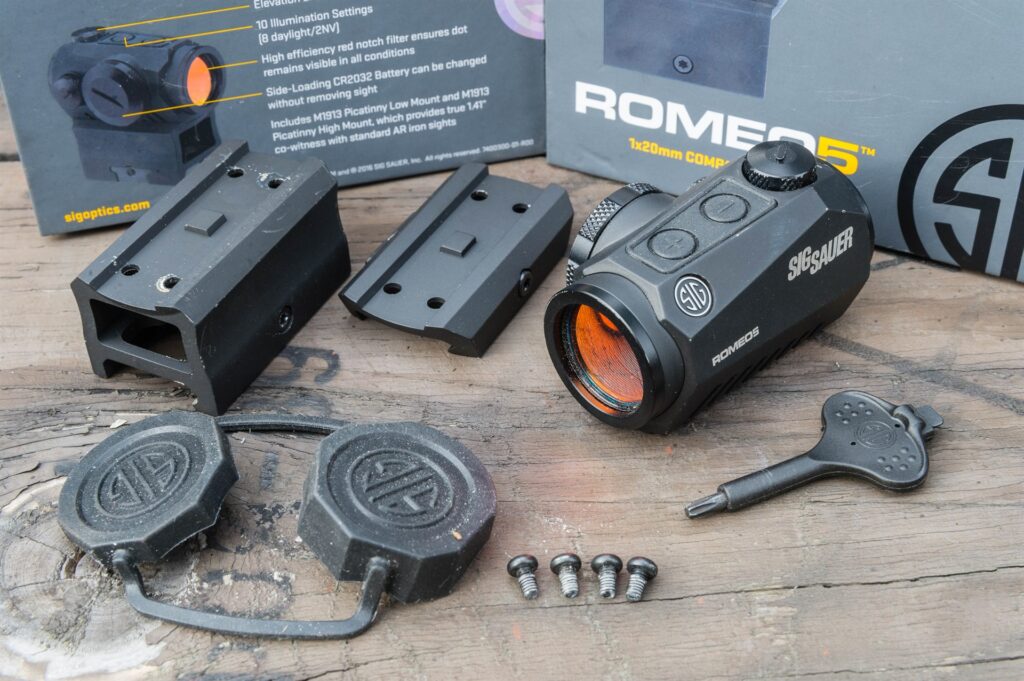
ROMEO5 kit with a torx key. The flat end is used to regulate the aiming point, but – if necessary – it can open the battery compartment
RETICLE
The device emits a 2 MOA dot-shaped reticle, which means that it covers about 60 millimeters of a target on 100-meter distance. Such size enables precise aiming on short and medium distances and makes the spot clearly visible. The buttons on top of the sight enable the user to turn the device off and to adjust the brightness; they work with an audible click and pressing either of them for a couple seconds deactivates the sight. Brightness can be regulated on 10 levels – eight of them are designed for the naked eye, while two with the lowest level of intensity are supposed to be used with night vision or thermal imaging devices. The highest level of brightness makes the dot visible even in full sun.
The reticle can be adjusted both horizontally and vertically up to 40 MOA. It can be done by rotating the turrets in the direction shown by an arrow imprinted on the device (or against it) with the help of a screwdriver, a coin or turret caps that were implemented with proper protrusions. The top turret is partially covered by the rest of the device. This protects the mechanism from accidental impact and damage.
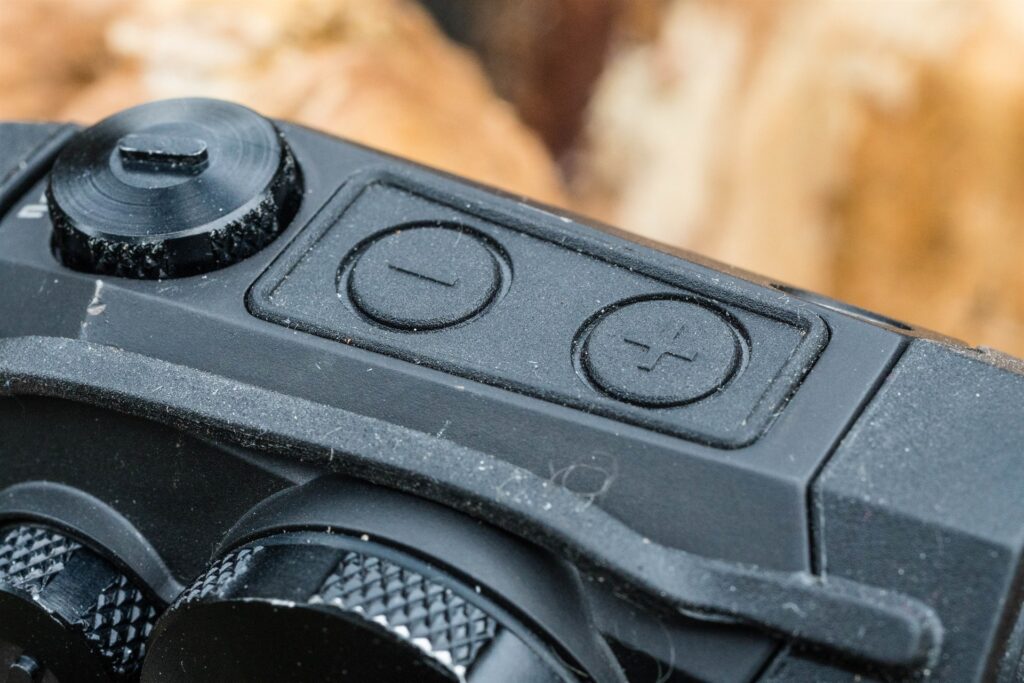
ROMEO5’s rubber buttons work sharply and their flat design prevents the brightness of the reticle from changing accidentally
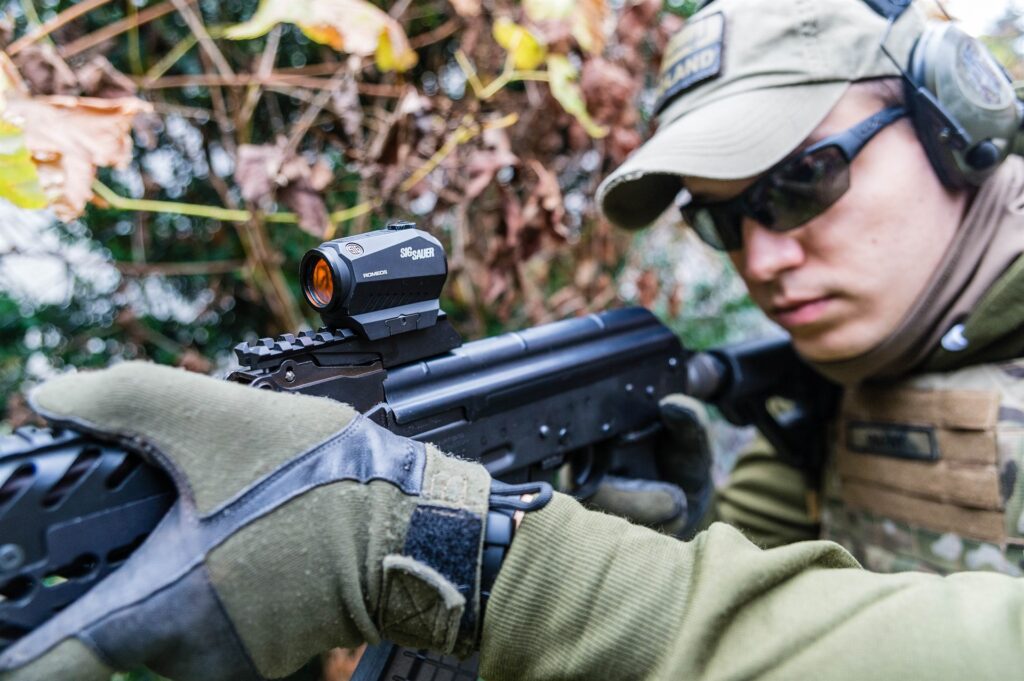
Solid low mount of ROMEO5 sight. The device is stabilized by four screws and a square metal pin preventing a change of settings
POWER SUPPLY
Like many similar devices, ROMEO5 is powered with one CR2032 battery with an output voltage of 3V. The battery is inserted into the socket covered by a cap on the right side of the sight. The manufacturer informs that the lifespan of the battery is 40 000 hours, but also stresses that with using MOTAC this number can be doubled.
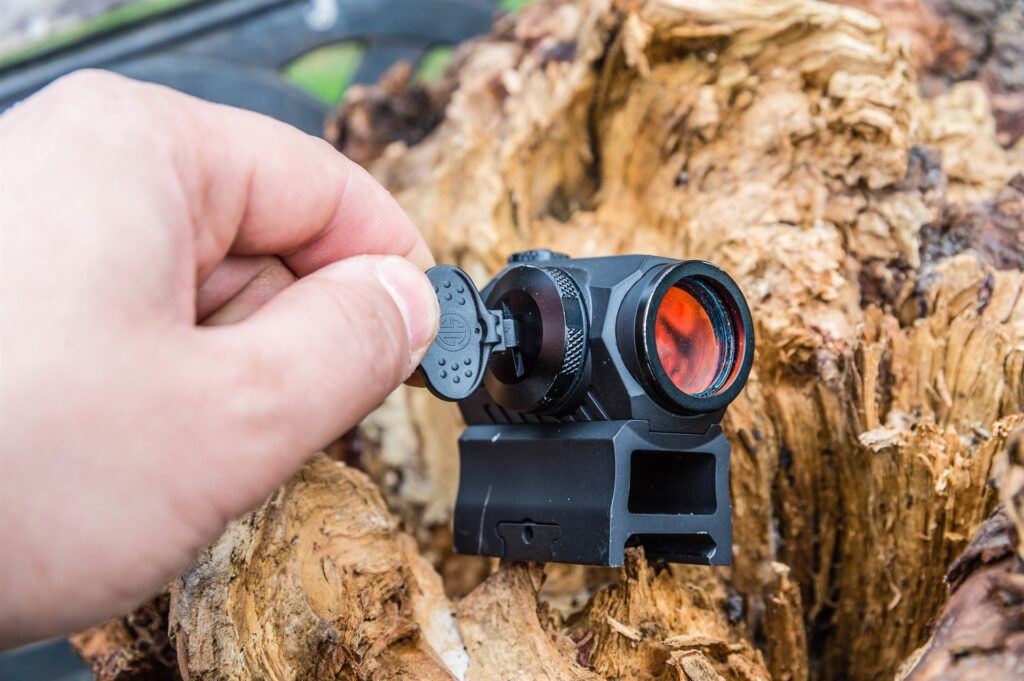
The battery is put in a socket covered by a cap located on the right side of the device
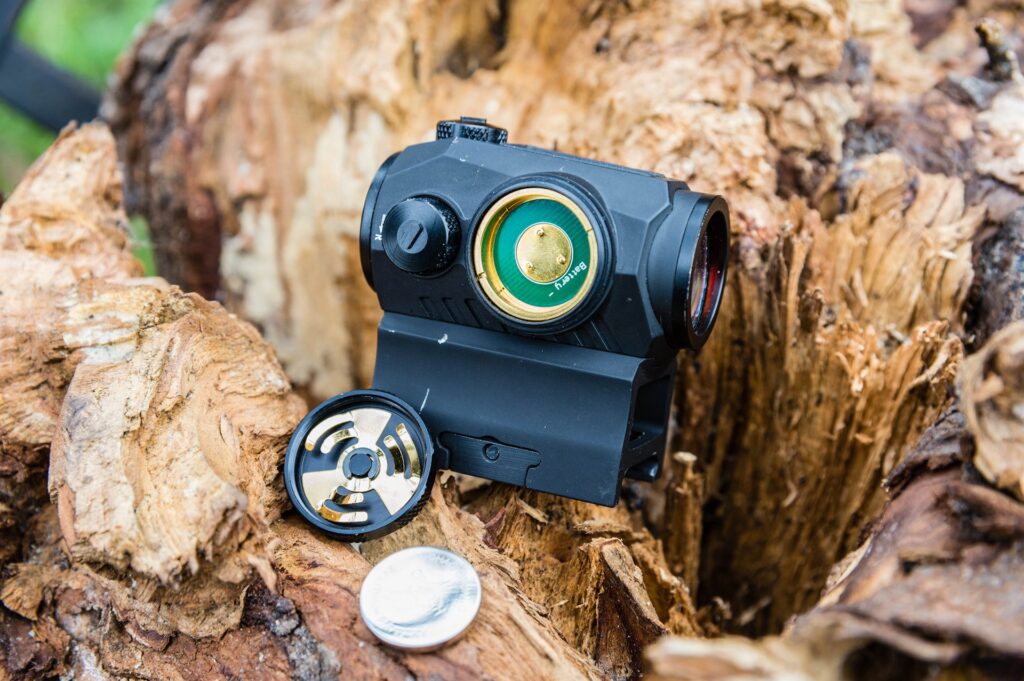
ROMEO5 is powered by a single CR2032 battery with an output voltage of V3. The manufacturer informs that it can work for 40 000 hours which can be prolonged by using MOTAC system
SUMMARY
ROMEO3 and ROMEO5 are modern red dot sights that seem irreproachable – even in terms of aesthetics; one might add that the smaller model catches the eye of others at a shooting range. Although we try not to damage them during our tests, the devices are used with many weapons and with great intensity. Few thousand shots were fired from the firearms equipped with the sights. That being said, there were no visible traces of loosening the mounts or losing zero.
With SIG Sauer Electro-Optics’s red dot sights everything seems to work well, the devices are firmly fixed to the weapons and they easily survive minor falls and grazes. Their lightweight, solid build, high quality of their components and decent parameters immediately inspire confidence. The high mount (36 millimeters) included in both kits allows for true co-witness effect – it means that the aiming point is aligned with iron sights. One of the huge advantages of both sights is their lifetime warranty, regardless of the cause of damage. However, it is not certain that you will ever need it, because our tests seem to prove otherwise. ROMEO5 comes at an affordable price. It will definitely appeal to shooters who do not want to spend as much on their sights as they did on their weapons. What is more, the price includes two mounts, which is not that obvious, as usually the sights are sold with just one.
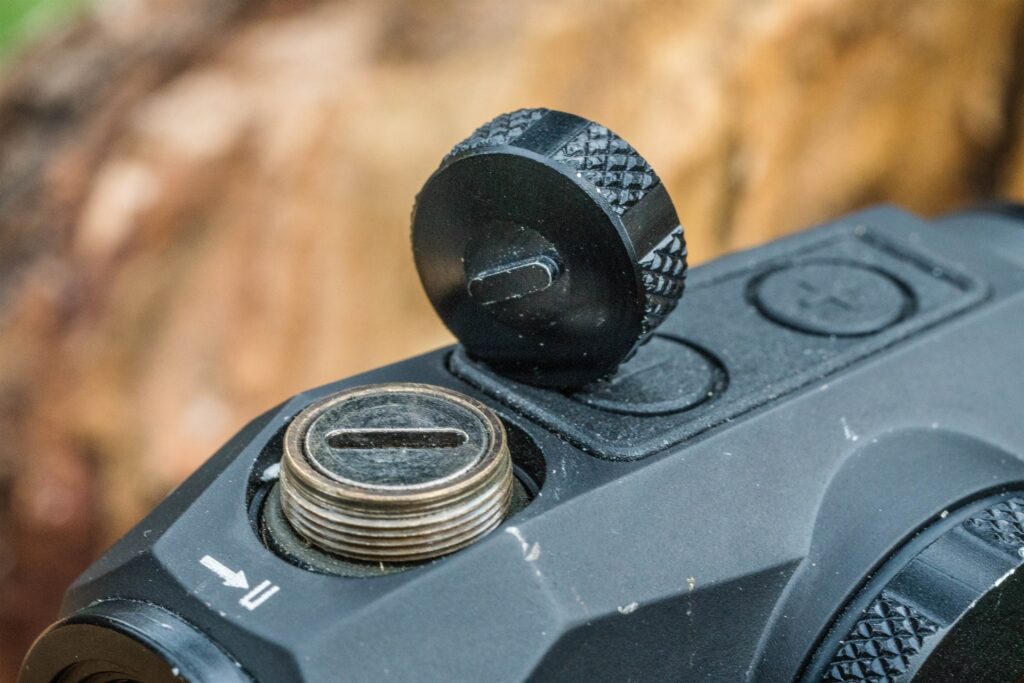
Because of the protrusion, the cap can be used as a tool for reticle adjustment. It eliminates the necessity of looking for a screwdriver every time the shooter wants to change it
Article previously published on MILMAG 01/2019








